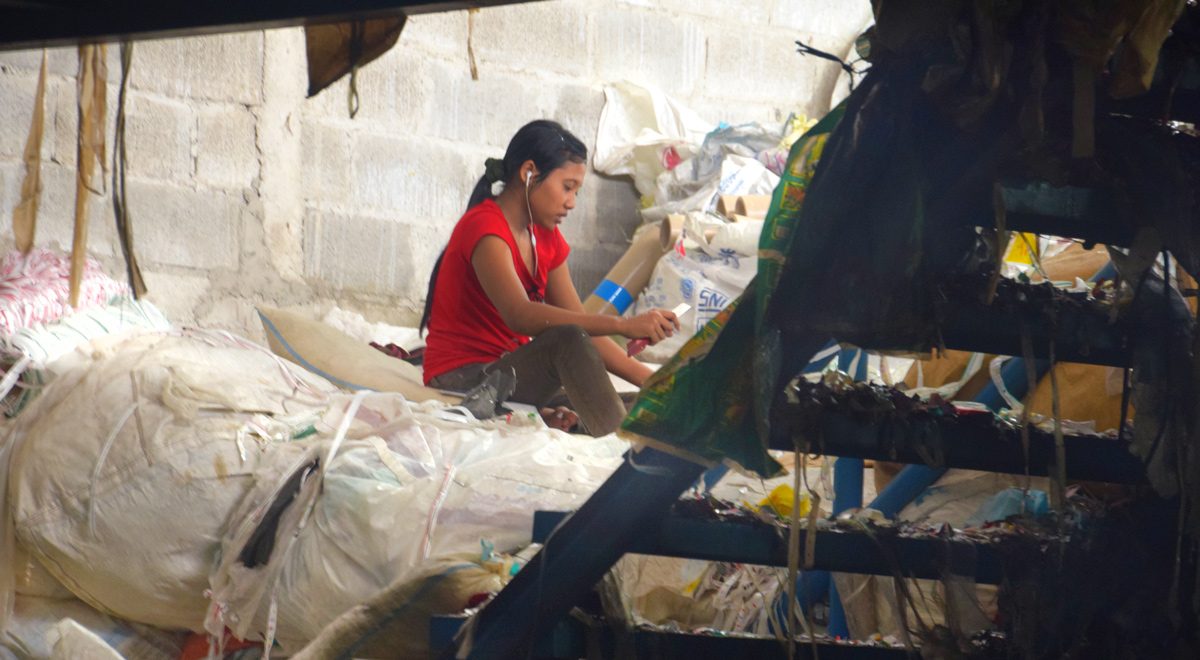
We produce something that has no value to be collected, nor to be recycled. We produce something for which we have no viable technology to handle it. We produce something that is bound to leak into the environment. The small recycling factories in Surabaya that try to make use of multi-layer packaging, do so on the expanses of their worker’s health. What makes us produce such materials when there is no means to control it?
By Anne Poggenpohl – Repost from www.mappingplastics.org
Multi-layer flexible packaging solutions consist of a thin film of plastic and aluminum that allow to create the best benefit to keep food and beverages fresh. Sachets are a popular packaging format made of multi-layers in Indonesia – it is the packaging of one single portion of shampoo, detergent or seasoning.
For example, about 50% of all cleaning products are sold in sachet formats in Indonesia. It has gained momentum during the crisis and is since then still growing in the market as it makes branded goods affordable for everyone. It is also perceived as very practical by a wide variety of users: for example, to have one portion of coffee in the office or single wrapped cookies.
Additionally, it allows safe food transport in between Indonesia’s 17,000 islands. However, after the single usage of the multi-layer packaging, the layer mix can only be downcycled to low value plastic applications – if it can be downcycled at all!
In Surabaya, I have found only one factory with a low-tech solution in place to handle multi-layer packaging (see pictures). The multi-layer packaging gets shredded, melted and becomes a plastic layer to seal roofs.
The technology in place is very low-tech, simple and demands input of manual labor. Just spending about an hour in the fumes already gave me a headache – daily working hours are of course a lot longer than that.
The current technological gap of handling multi-layer packaging, the unhealthy working conditions, the rapidly filling landfills and the widely reported littering are confronted with an increasing market demand for multi-layer packaging.
In 2016, flexible packaging occupied a market share of 42% and it is forecasted to increase by about another 5% until 2021. Inevitably the pressure on the ecosystems will drastically rise, as a great share of the unrecyclable and invaluable multi-layer plastic packaging make up the waste in our environment and oceans already today.
But just to keep insights balanced: recycling is not a sole problem of emerging or developing economies! “More than 40 years after the launch of the first universal recycling symbol, globally only 14% of plastic packaging is collected for recycling. When additional value losses in sorting and reprocessing are factored in, only 5% of material value is retained for a subsequent use. Plastics that do get recycled are mostly recycled into lower value applications that are not again recyclable after use.” (EMF 2016)
To put these numbers into perspective, “plastic recycling rates are still far below the global recycling rates for paper (58%) and iron and steel (70–90%)“ (ebds.). In addition, plastic packaging is almost exclusively single-use, with an average usage time of 12 minutes.
Comparing different countries, there are apparently other ways to pack food and beverages safely. For example, in Germany the licensing system demands companies that bring packaging onto the market to pay for the collection and recycling of their materials. As the multi-layers are a complex material to handle, using multi-layer packagings in German markets is rather expensive and companies therefore reduce the usage.
Leaving this complex topic on a positive note: Unilever announced in 2017 that they are working with partners on a new technology to recycle sachets and shift them to a circular economy. The CreaSolv technology should become available open source to encourage other companies as well.
Great thanks to all the people that allowed me to gain those insights!
As a systemic perspective on plastics packaging deals with more than recycling only, I am making my way further upstream.
Sources
Interviews with diverse stakeholders – please get in touch with me for further details on this.
Plastics technology: https://www.ptonline.com/blog/post/unilever-introduces-process-to-recycle-multilayer-sachets-
PR Newswire: Trends and Opportunities in the Indonesian Packaging Industry: Analysis of changing packaging trends in the Food, Cosmetics and Toiletries, Beverages and Other Industries (Accessed Januar 2018)
World Economic Forum, Ellen MacArthur Foundation and McKinsey & Company: The New Plastics Economy — Rethinking the future of plastics (2016, http://www.ellenmacarthurfoundation.org/publications).
